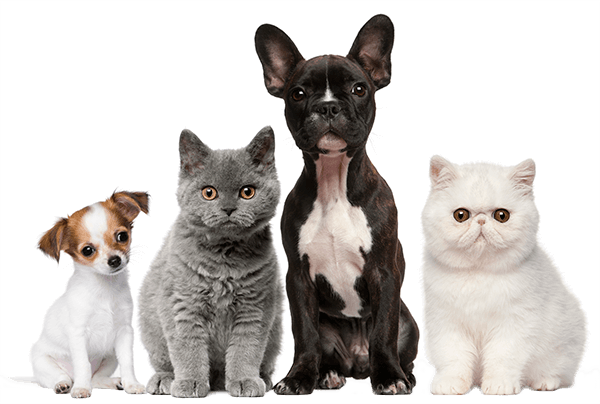Indoor activities are not only important for humans, but they are also crucial for our furry friends. Pets, whether they are cats or dogs, need mental stimulation and physical exercise to stay happy and healthy. However, sometimes the weather or other circumstances prevent us from taking our pets outside for their usual activities. That’s where indoor pet activities come in.
Benefits of Indoor Activities for Pets
Indoor activities offer numerous benefits for pets. Firstly, they improve physical health. Regular exercise helps pets maintain a healthy weight and reduces the risk of obesity-related health issues such as diabetes and joint problems. Indoor activities also provide mental stimulation and reduce boredom. Pets can easily become bored if they don’t have enough mental stimulation, which can lead to destructive behavior. Engaging in indoor activities keeps their minds active and prevents boredom. Additionally, indoor activities provide an opportunity for bonding with pet owners. Spending quality time together strengthens the bond between pets and their owners, leading to a happier and healthier relationship. Lastly, engaging in indoor activities reduces the risk of injury or illness. Outdoor activities can sometimes expose pets to hazards such as extreme weather conditions or encounters with other animals. By keeping them indoors, we can minimize these risks and ensure their safety.
Fun Games to Play with Your Pet Indoors
1. Hide and seek: This classic game is not just for kids! Hide treats or toys around the house and encourage your pet to find them. This game stimulates their natural hunting instincts and keeps them entertained.
2. Fetch: Yes, you can play fetch indoors! Use soft toys or balls that won’t break anything and clear a space for your pet to run. This game provides both mental and physical exercise.
3. Puzzle toys: Puzzle toys are a great way to keep your pet mentally stimulated. These toys require them to figure out how to get a treat or toy out of a puzzle, keeping their minds engaged and entertained.
4. Laser pointer: Cats love chasing laser pointers! Shine the laser around the room and watch as your cat pounces and chases after it. Just make sure not to shine it directly into their eyes.
5. Tug of war: This game is perfect for dogs who love to play and tug on things. Use a rope toy or an old towel and engage in a friendly game of tug of war with your furry friend.
DIY Toys for Your Furry Friend
1. Homemade catnip toys: Cats go crazy for catnip! You can easily make your own catnip toys by sewing small fabric pouches filled with dried catnip. Your cat will have hours of fun batting them around.
2. DIY treat dispenser: Turn an old plastic bottle into a treat dispenser by cutting small holes in it. Fill it with your pet’s favorite treats and watch as they figure out how to get the treats out.
3. Upcycled sock toys: Don’t throw away those mismatched socks! Stuff them with some old fabric or stuffing and tie them off to create a fun toy for your pet to chew on or play with.
4. Cardboard box playhouse: Cats love boxes, so why not turn them into a playhouse? Cut holes in the sides of a large cardboard box and let your cat explore and play inside.
Indoor Exercise Ideas for Your Pet
1. Treadmill training: If you have a dog that needs a lot of exercise, consider treadmill training. Start by getting your dog comfortable with the treadmill while it’s off, and then gradually increase the speed. This is a great way to provide them with exercise when going outside is not an option.
2. Stair climbing: If you have stairs in your home, utilize them for some indoor exercise. Encourage your pet to climb up and down the stairs a few times to get their heart rate up and burn off some energy.
3. Agility courses: Set up a mini agility course in your living room or backyard using household items such as chairs, broomsticks, and hula hoops. Guide your pet through the course, teaching them to jump over obstacles and weave through poles.
4. Yoga for pets: Yes, pets can do yoga too! There are specific yoga poses and stretches that can benefit your pet’s flexibility and overall well-being. Look for pet-friendly yoga classes or follow along with online tutorials.
Importance of Regular Veterinary Care

Regular veterinary care is essential for the health and well-being of our pets. Just like humans, pets need regular check-ups to ensure they are in good health and to catch any potential issues early on. Dr. Aimee and team can provide vaccinations, perform routine exams, and address any concerns or questions you may have about your pet’s health. Regular vet visits also allow for preventive care, such as flea and tick prevention, dental cleanings, and heartworm testing. By staying on top of your pet’s veterinary care, you can help prevent serious health issues and ensure they live a long and happy life.
Common health issues in pets include dental disease, obesity, allergies, arthritis, and heartworm disease. Dental disease is one of the most common health issues in pets and can lead to pain, infection, and tooth loss if left untreated. Obesity is also a prevalent issue among pets and can lead to a range of health problems such as diabetes, joint issues, and heart disease. Allergies can cause skin irritation and discomfort for pets, while arthritis can cause pain and mobility issues, especially in older pets. Lastly, heartworm disease is a serious and potentially fatal condition that can be prevented through regular veterinary care and preventive medications.
Vaccinations for Pets in St Pete
Vaccinations are an important part of keeping your pet healthy and protected from preventable diseases. Vaccines stimulate the immune system to produce antibodies that fight off specific diseases. Common vaccinations for pets include rabies, distemper, parvovirus, adenovirus, and feline leukemia. Rabies is a deadly disease that can be transmitted to humans, so it is required by law in most states, including St Petersburg. Distemper is a highly contagious viral disease that affects dogs and can cause respiratory, gastrointestinal, and neurological symptoms. Parvovirus is another highly contagious viral disease that affects dogs, particularly puppies, and can cause severe vomiting and diarrhea. Adenovirus is a viral disease that affects dogs and can cause respiratory and liver issues. Feline leukemia is a viral disease that affects cats and can lead to immunosuppression and increased susceptibility to other infections.
Keeping track of your pet’s vaccination schedule is important to ensure they are up to date on their shots. Your veterinarian will provide you with a vaccination schedule based on your pet’s age, lifestyle, and risk factors. It’s important to follow this schedule and keep records of your pet’s vaccinations. Some veterinarians offer reminder services to help you stay on top of your pet’s vaccinations. Additionally, many boarding facilities, groomers, and dog parks require proof of vaccinations before allowing pets to enter.
In conclusion, indoor pet activities are important for the physical and mental well-being of our pets. They provide exercise, mental stimulation, bonding opportunities, and reduce the risk of injury or illness. There are many fun games and DIY toys that can keep our pets entertained indoors. Additionally, indoor exercise ideas such as treadmill training and agility courses can help keep our pets active. Regular veterinary care is also crucial for the health of our pets.
If you’re looking for more ways to keep your indoor pets entertained, check out this helpful article on safe travel tips with your pet this summer. Whether you’re planning a road trip or flying to your destination, it’s important to ensure your furry friend’s safety and comfort. From choosing the right carrier to packing essential supplies, these four tips will make your pet’s travel experience stress-free and enjoyable. Don’t forget to also explore other informative articles on walking your dog in hot weather, natural flea and tick control options, and more in the resources section of Fur Ever Friends Veterinary Clinic’s website.
FAQs
What are indoor pet activities?
Indoor pet activities are games and exercises that pets can do inside the house to keep them entertained and active.
Why are indoor pet activities important?
Indoor pet activities are important because they help prevent boredom and destructive behavior in pets. They also provide mental and physical stimulation, which is essential for their overall health and well-being.
What are some examples of indoor pet activities?
Examples of indoor pet activities include playing with toys, hide-and-seek, puzzle games, training exercises, and interactive feeding toys.
What types of pets can participate in indoor activities?
Indoor pet activities can be enjoyed by a variety of pets, including dogs, cats, rabbits, guinea pigs, and even birds.
How often should indoor pet activities be done?
The frequency of indoor pet activities depends on the pet’s age, breed, and energy level. Generally, it is recommended to engage in indoor activities with pets for at least 30 minutes a day.
What are the benefits of indoor pet activities?
The benefits of indoor pet activities include improved physical health, mental stimulation, reduced stress and anxiety, and strengthened bond between pet and owner.





